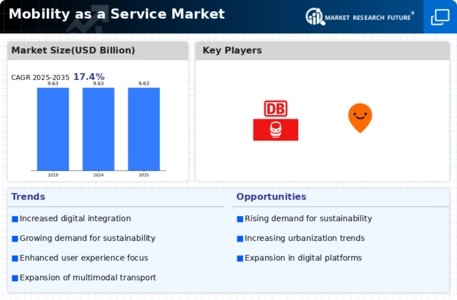Mobility as a Service Market Summary
As per Market Research Future Analysis, the Mobility as a Service (MaaS) Market is projected to exceed USD 754.341 Billion by 2032, with a CAGR of 17.4%. MaaS integrates various transportation modes into a single platform via mobile applications, enhancing customer convenience and promoting energy-efficient commuting. The market is driven by urbanization, with over 50% of the global population living in urban areas, expected to rise to 60% by 2025. The COVID-19 pandemic temporarily hindered growth due to reduced public transport usage and health concerns. However, the shift towards technology and eco-friendly solutions presents significant opportunities for growth, particularly in smart city initiatives and electric vehicle adoption.
Key Market Trends & Highlights
Key trends shaping the Mobility as a Service market include urban congestion solutions and technological advancements.
- Mobility as a Service market expected to reach USD 754.341 Billion by 2032.
- CAGR of 17.4% anticipated during the forecast period.
- Current global market value projected at USD 485 Billion by 2024, with a CAGR of 39.40%.
- Over 50% of the global population resides in urban areas, increasing to 60% by 2025.
Market Size & Forecast
| Market Size in 2024 | USD 485 Billion |
| Projected Market Size by 2032 | USD 754.341 Billion |
| CAGR | 17.4% |
Major Players
Daimler AG, BMW, Deutsche Bahn, Lyft Inc, MaaS Global Oy, GrabTaxi Holdings, Beijing Xiaoju Technology, Uber Technologies, Communauto, Moovit Inc, Xerox Corporation, ANI Technologies, Bridj Pty Ltd, JapanTaxi Co. Ltd, Wiwigo.














Leave a Comment